I want to combine IF and AND statements in VBA, but I don't know how to write them..."
I have experienced such problems. Actually,It is written a little differently than Excel's IF function.It is.
In my 20 years of Excel work, I have used IF AND in VBA toAutomates many tasksWe have been doing this for a number of years. For example, every monthSales data checking, which used to take three hours, now takes only five minutes.
This article covers the basic writing of IF AND in VBA, as well as specific examples that can be used in practice,Easy-to-understand explanations for beginnersI will do so. For those who are having trouble with errors,Solutions to common problemsI will also introduce you to
Now, let's master conditional branching in VBA together!
Fundamentals of IF AND in VBA
How to combine IF syntax and AND?
The IF function is a familiar one in Excel and can be used in VBA in the same way, but the way it is written is a little different when combining multiple conditions.
For example, if you want to find data for "arrival time is after 9:00" and "departure time is before 17:00". If you try to write this with an IF function...
=IF(AND(B2>=TIME(9,0,0), C2<=TIME(17,0,0)), "Late or early departure", "")...and so on. But with VBA, it is a little different:
If Cells(i, 2).Value >= TimeValue("09:00:00") And Cells(i, 3).Value <= TimeValue("17:00:00") Then
Cells(i, 4).Value = "Late or Early Leave"
End IfAnd this is how it is written.
Basic rules of syntax
The basic writing style is this:
If Condition 1 And Condition 2 Then
'Process when condition is met
End IfNext, let's look at an example of a common use in real business...
Practical use cases and implementation techniques
Basic pattern for determining cell values
The previous example of time and attendance was a time determination. But in actual operations, there are many more patterns.
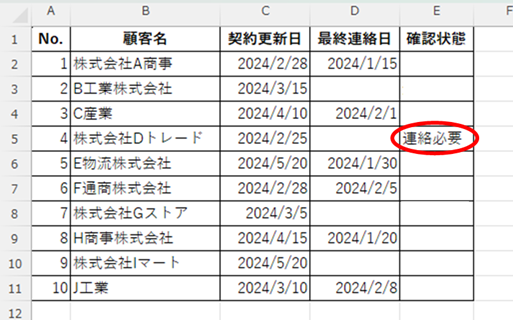
For example, a company's contract renewal management. You want to find a customer who is "nearing his/her contract renewal month" and "has not yet contacted you":
Sub Update Near and Not Contacted()
Dim lastRow As Long
Dim i As Long
Dim currentMonth As Integer
currentMonth = Month(Date) Get 'current month (February)
lastRow = Cells(Rows.Count, 1).End(xlUp).Row
For i = 2 To lastRow'Contract renewal date is February and last contact date is blank
If Month(Cells(i, 3).Value) = currentMonth And Cells(i, 4).Value = "" Then
Cells(i, 5).Value = "Need to contact"
End If
Next i
End Sub💡 What is the Month() function?
This function retrieves only the month from a date. For example, 9 is retrieved from 2024/9/12.
This code reduced the monthly contact list creation from 30 minutes to 2 minutes.
Utilization in User Forms
And form entry checks. IF AND This is the specialty of the For example, when checking "Required" and "Numeric Only":
If TextBox1.Text "" And IsNumeric(TextBox2.Text) Then
Label1.Caption = "OK!"
Else
Label1.Caption = "Input error"
End If🔍 What is IsNumeric()?
This function checks if a value can be treated as a number. For example, "123″ is OK and "ABC" is not.
But there are more complicated requirements, aren't there?"
That's right. Actually, here's the thing. IF AND This is where the true value of the
An example of a more practical input check:
'Entry check of product registration form
Private Sub btnRegister_Click()
'Product code check (required, at least 5 characters)
If Len(txtProductCode.Text) >= 5 And txtProductName.Text "" Then
'Unit price check (required, numeric, 0 or more)
If IsNumeric(txtPrice.Text) And Val(txtPrice.Text) > 0 Then
'Inventory count check (required, numeric, 0 or more)
If IsNumeric(txtStock.Text) And Val(txtStock.Text) >= 0 Then
lblResult.Caption = "Registration OK!"
' Write the actual registration process here
Else
lblResult.Caption = "Please enter a number greater than or equal to zero for the inventory count."
End If
Else
lblResult.Caption = "Please enter a number greater than zero for the unit price."
End If
Else
lblResult.Caption = "Product code (at least 5 characters) and product name are required."
End If
End Sub💡 Frequently used input check functions
IsNumeric(): Check if it is valid as a numerical value.Len(): Get the length of a stringVal(): Converts strings to numbers (treats non-numbers as zeros)Trim(): Remove trailing whitespace
If you need to use a large number of conditions, instead of using AND or OR for all of them, you can put IFs within IFs in this way, which eliminates the need to check data for all of them, thus speeding up the process considerably.
🔍 Tips for input checks
- Do the most important checks first
- Error messages indicate what exactly is wrong
- For numerical values, add digit limits and range checks as needed
Troubleshooting and Debugging Techniques
Common errors and solutions
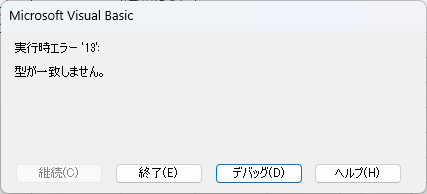
I was most addicted to this error when I was a rookie. There are three main causes:
.ValueForgot to add the- Forgetting to initialize an object
- Misdesignation of cell range
Especially the most common one. But there is a convenient way to do this:
Debugging Code
Debug.Print "Value of cell: " & Cells(i, 2).Value
Debug.Print "Judgment result:" & (Cells(i, 2).Value >= 100)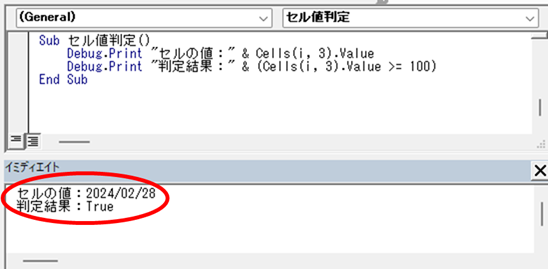
This method makes it easier to determine if the target cell has the proper value.
Print will display the result in the Immediate Window. For more information about the Immediate Window, seeHow to display the Immediate Window Excel(Excel) Macro(VBA).
Performance and Optimization
The best way to write conditional expressions
When checking multiple conditions, there is a little trick to speed up the process.
For example, a code like this:
' Before improvement: check all conditions at once
For i = 2 To lastRow
If Cells(i, 2).Value = "Target" And Cells(i, 3).Value > 100 And Cells(i, 4).Value = "Unprocessed" Then
'Processed
End If
Next iThis code looks good and simple, but in fact, when processing 10,000 dataFor about 8 seconds.Why is this? Why is that?
It is,All three conditions are always checked on every line.From.
💡 Failures in practice When I was a rookie, I used to write, "It's cleaner to put the terms on one line!" I used to write them in one line. As a result, I remember being scolded by my seniors for being slow in processing large amounts of data...(laugh)
So how can we improve it?
'After improvement: check conditions step by step
For i = 2 To lastRow
If Cells(i, 4).Value = "Unprocessed" Then 'The most narrowly defined criteria first.
If Cells(i, 2).Value = "Target" Then
If Cells(i, 3).Value > 100 Then
Processing details
End If
End If
End IfWith this writing method, the same 10,000 data can be processed in 3 seconds!
Improved code readability
But isn't it hard to see the nested IF statements?"
It may seem so. If so, there is a way to summarize the conditions:
'Writing for readability
For i = 2 To lastRow
Dim isUnprocessed As Boolean
Dim isTarget As Boolean
Dim isOverLimit As Boolean
isUnprocessed = (Cells(i, 4).Value = "Unprocessed")
isTarget = (Cells(i, 2).Value = "Target")
isOverLimit = (Cells(i, 3).Value > 100)
If isUnprocessed And isTarget And isOverLimit Then
'Processed
End If
Next i💡 Variable Name Tips
- If you give it a name that starts with "is", you can easily identify it as a conditional variable.
- Name the conditions in such a way that you can tell what they are just by looking at the variable names!
Developmental Techniques
Usage with other control syntaxes
In fact, there are cases where it is inefficient to use only IF AND. For example:
'IF AND is used.
If Cells(i, 1).Value = "A" And Cells(i, 2).Value = "Done" Then
'Processing A
ElseIf Cells(i, 1).Value = "B" And Cells(i, 2).Value = "Done" Then
'Processing B
ElseIf Cells(i, 1).Value = "C" And Cells(i, 2).Value = "Done" Then
'Processing C
End IfThis is a much smarter way to write:
'When using Select Case
If Cells(i, 2).Value = "Done" Then
Select Case Cells(i, 1).Value
Case "A".
'Processing A
Case "B".
'Processing B
Case "C".
'Processing C
End Select
End If💡 Advice in practice If you are checking multiple values for the same item, Select Case is easier to read and maintain. I also wrote everything in IF AND at first, but it was difficult to revise later...(^^;)
Advanced Combination of Conditional Expressions
AND, OR, NOTMore complex conditional branching is also possible by combining
'Example of compound condition check in inventory control
If (Cells(i, 2).Value <= 10 And Cells(i, 3).Value = "Class A") Or _
(Cells(i, 2).Value <= 5 And Cells(i, 3).Value = "Class B") Or _
(Not Cells(i, 4).Value = "Ordered" And Cells(i, 5).Value = "Urgent") Then
Cells(i, 6).Value = "Order Required")
End IfThis code checks for the following situations
- Less than 10 Class A inventory
- Less than 5 B class inventory
- Items that have not been ordered (Not) and are designated as urgent
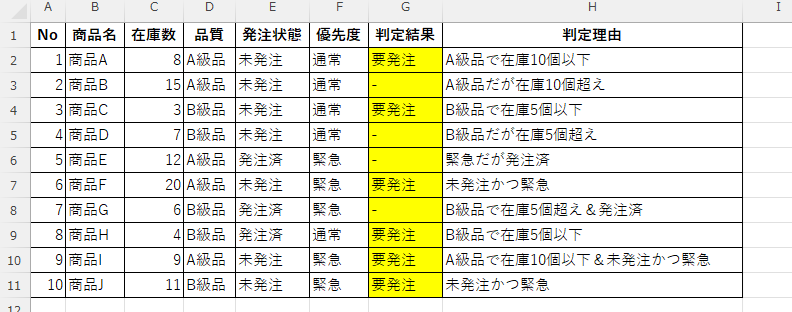
💡 Key points in practice
When combining AND, OR, and NOT, group the conditions using parentheses ( ) to make them easier to read.
Use space + underscore ( _ ) to break a line in the middle of a line
The more complex the condition, the more important it is to explain the decision in comments
⚠️ important point
If the conditions become too complex, that may be a sign to rethink the design. In my case, if the number of conditions exceeds three, I would be wary, and if four or more, I would consider a different approach.
Frequently Asked Questions (FAQ)
Q1: I get an "Object required" error.

- QType mismatch. error.
- A
Most common.
.ValueYou forgot to add the Check it out like this:
'For debugging
Debug.Print TypeName(Cells(i, 3))
Debug.Print TypeName(Cells(i, 3).Value) 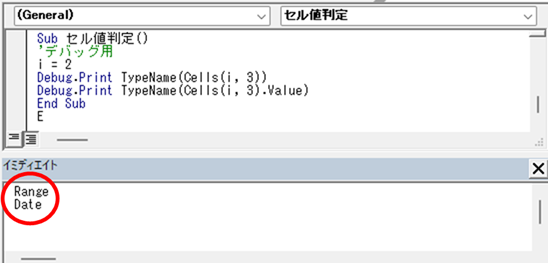
- QNot determined even though the condition is correct.
- A
A common problem in string comparisons, try using Trim to remove extra spaces:
If Trim(Cells(i, 1).Value) = "target" Then- Qslow processing
- A
Let's review the order of the conditions. Bringing the most "narrowable" conditions first can greatly improve speed.
Summary
IF AND is a very useful feature, but depending on how it is used, it can produce very different results.
- Basics.
.ValueDon't forget to put the - Conditions are phased in.Check.
- If it gets too complicated,Select CaseConsider using the
- For debuggingPrintmake use of a sentence
As the saying goes, "Seeing is believing," and the best way to improve is to actually try your hand at it.
It may be confusing at first, but we encourage you to take on the challenge with this guide! If you have any problems, please feel free to ask questions in the comments section.
🎯 Next Steps
- Practice with real data
- Mastering the Debugging Function
- Try other control syntaxes such as Select Case
This concludes the IF AND complete guide to VBA. We hope it will be useful for you to improve your work efficiency!
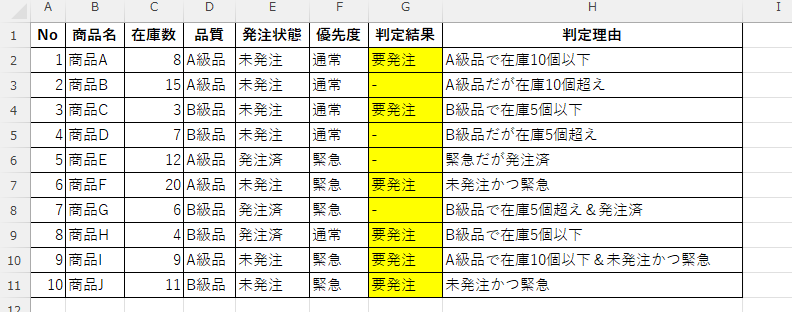







Comment